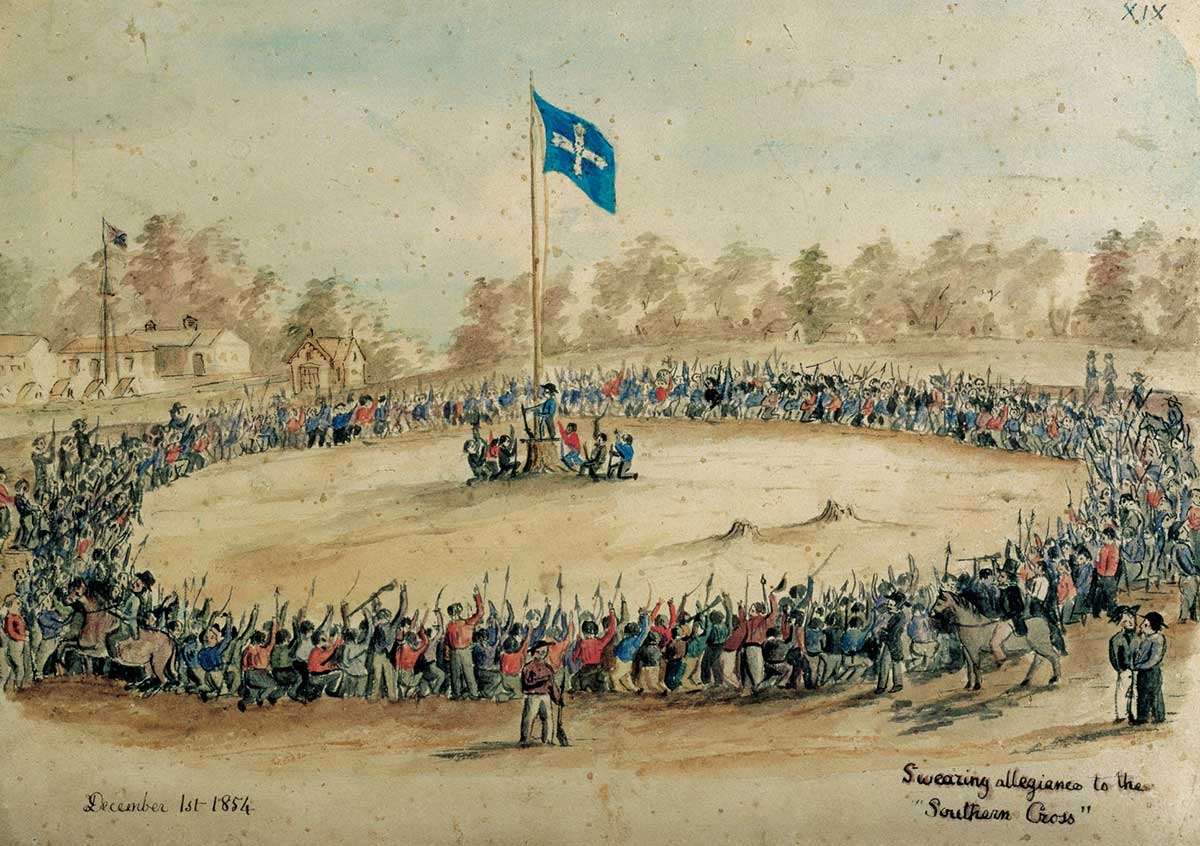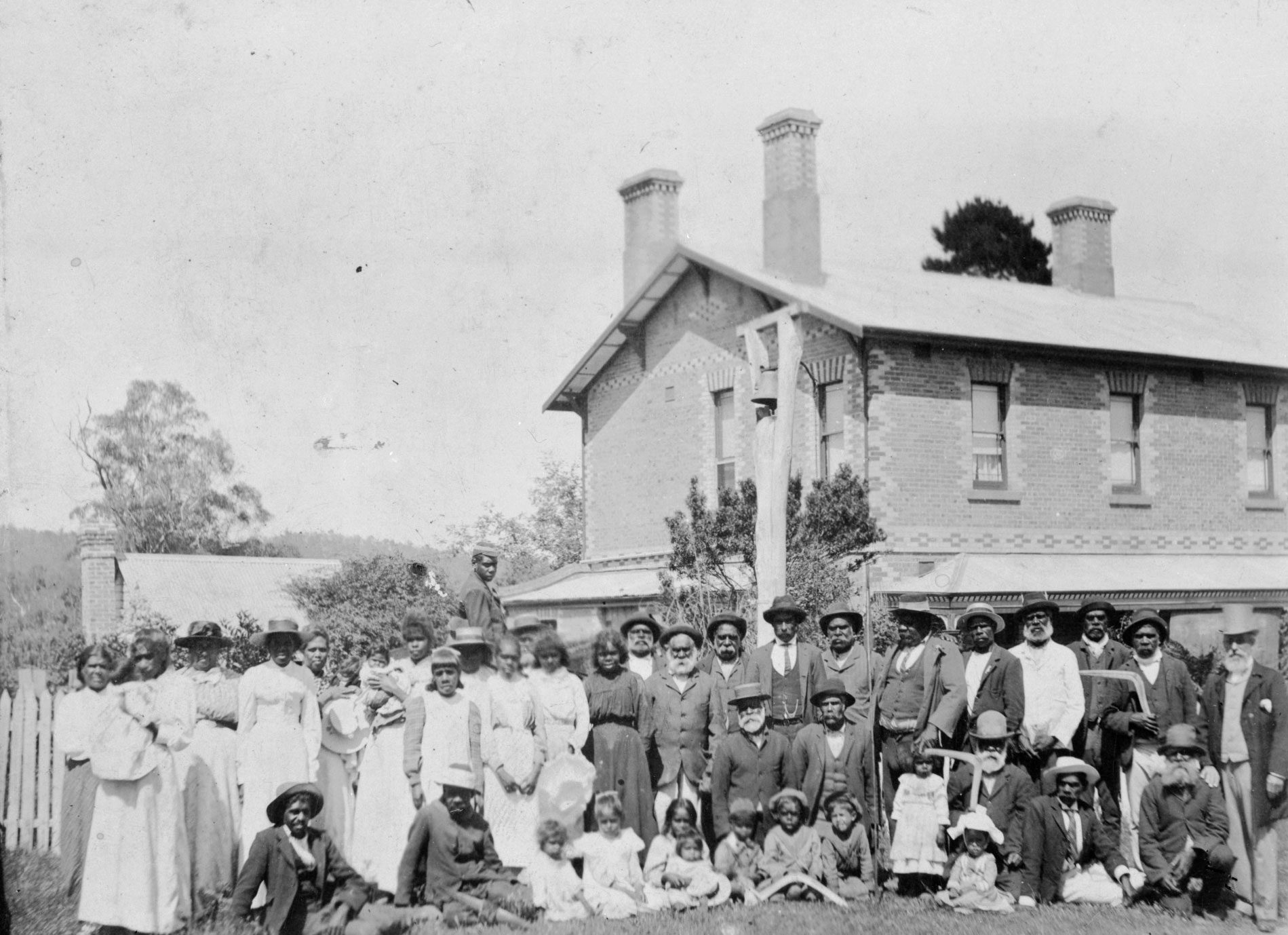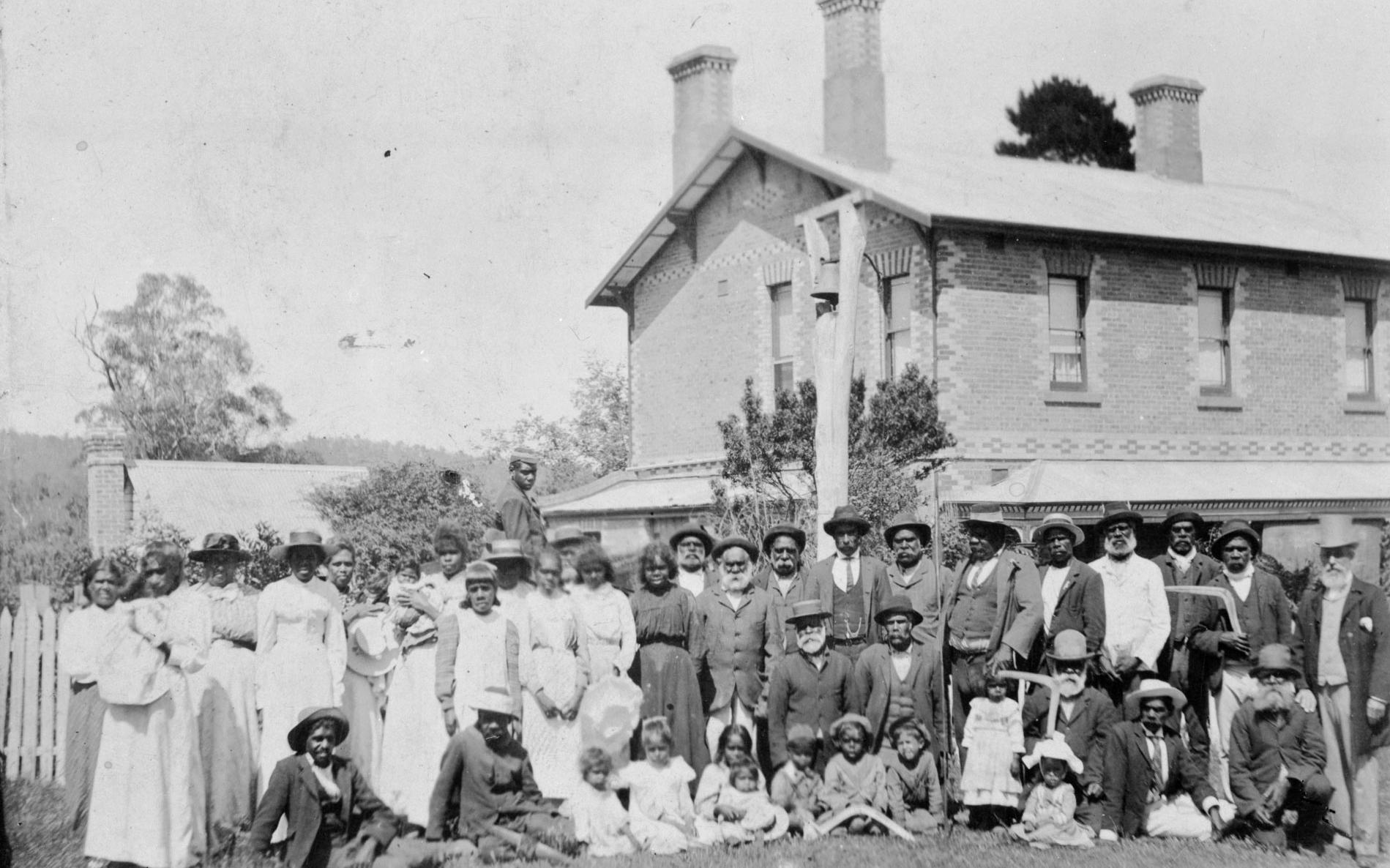Learning module:
The Spiritstone Saga
The Spiritstone Saga
17. Miners rise up
1854: Eureka Stockade

You make your way to Ballarat, a rural town a day’s ride northwest of Melbourne. There is a goldminer rebellion! The miners have set up a stockade, a wall of logs, around their base. As you approach, you strike up a conversation with one of the policemen standing guard. You ask him what is happening.
‘These miners! Think they’re above the law!’ he says, pointing to the stockade, ‘Just because they don’t like how the government is running the goldfields they think they can keep us out!’
‘But what started this?’ you ask.
‘They put a 30 shilling a month fee on all miners. It’s a lot of money and the gold round here is running out, so they’re unhappy. Still, doesn’t mean they can pick up weapons!’ he replies.
You wait until night, and sneak into the stockade. Inside are lots of sweaty, bearded men. They swear a lot but are willing to talk to you.
‘Been here since 1851, when gold was first found in these parts,’ says a short man named Sam, ‘Half the men of Melbourne came up here! Most of the crew of the ship I was working on just left and came here. Wild times!’
Another man chips in, ‘Then the government tries to take their cut. We’re out here slaving away day after day. Government provides us with nothing and now they wanna charge us 30 shillings a month! And then they get the police on us all the time for not paying the fee. Ridiculous!’
The others murmur in agreement. The place seems unsafe though, and Sam takes you to one side.
‘Listen youngster, it’s not safe for you here. There’s 300 police and soldiers out there and we think they might try and stop this protest tomorrow morning. You should get out while you can.’
You take his advice and sneak out before morning.
As the huge, yellow sun rises the next morning, you find a spot high in a gum tree to watch. Sure enough, the police and soldiers advance on the mining protestors. Gunshots ring out. The whole thing only lasts fifteen minutes, but you see 22 dead miners and six dead soldiers taken away. There must be over a hundred miners arrested as well.
You make your way back to Melbourne, to safety. Just 13 of the miners who were arrested were put on trial, but they were found not guilty by a jury. You read a newspaper article following the incident. Apparently the miners won! The licence fee was removed, and people representing the miners were added to the Victorian Legislative Council. Even their leader Peter Lalor, who once said ‘we swear by the Southern Cross to … fight to defend our rights and liberties’, is included.
The incident helped lead to men in Victoria being allowed to vote for the first time in 1857. Women were given the vote in 1908 in Victoria, the last of the Australian states to do so.
The Spiritstone glows brightly. ‘Again, I ask that you show you grasp how these events have unfolded by placing them in order from first to last.’
Your task
- Put these events in the correct order
As the stone glows green, you know that you have completed the task correctly.
‘You are needed elsewhere in Victoria, young one. Aboriginal people have been taken off country, you must head there now.’ Go to 20.







